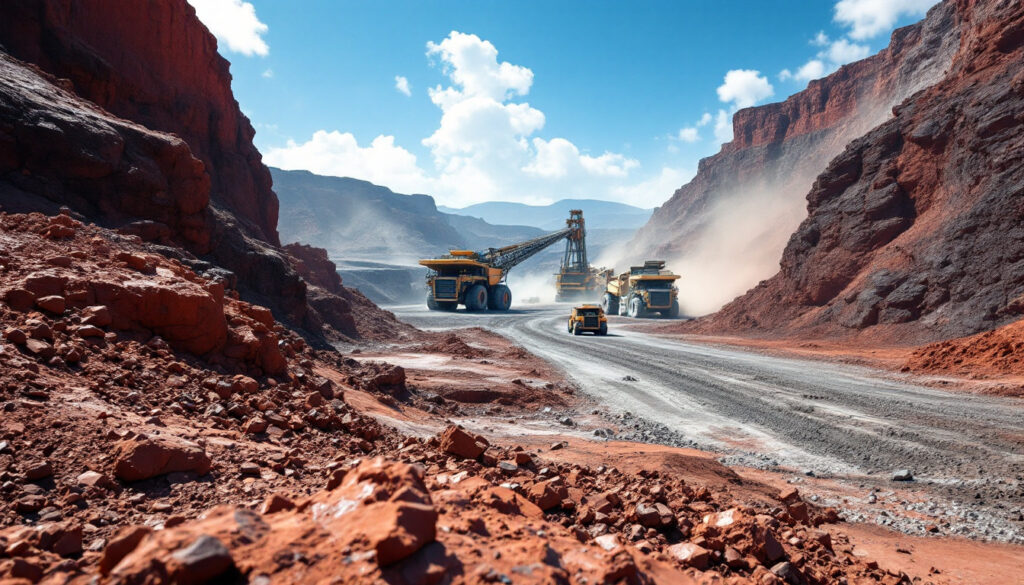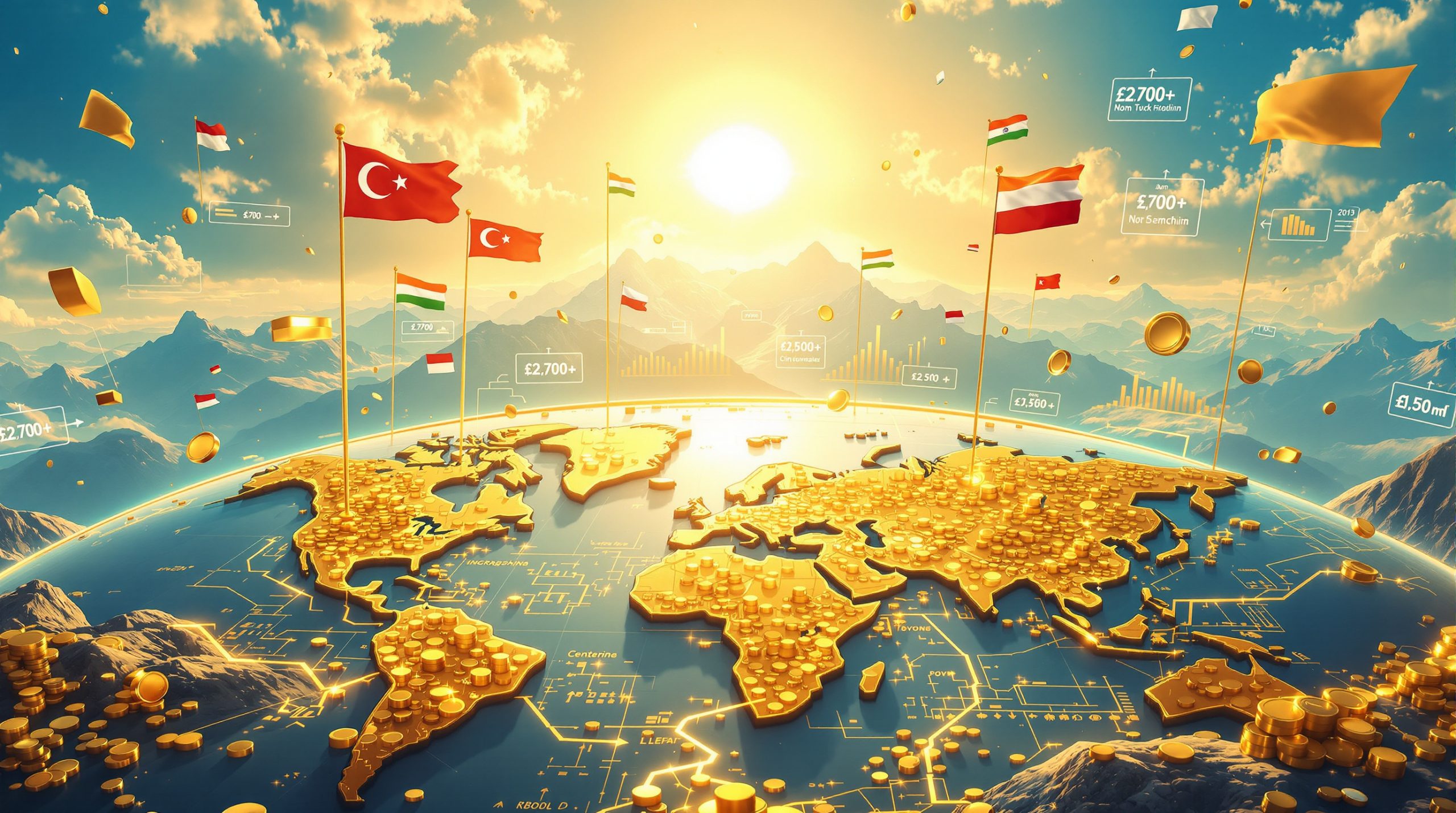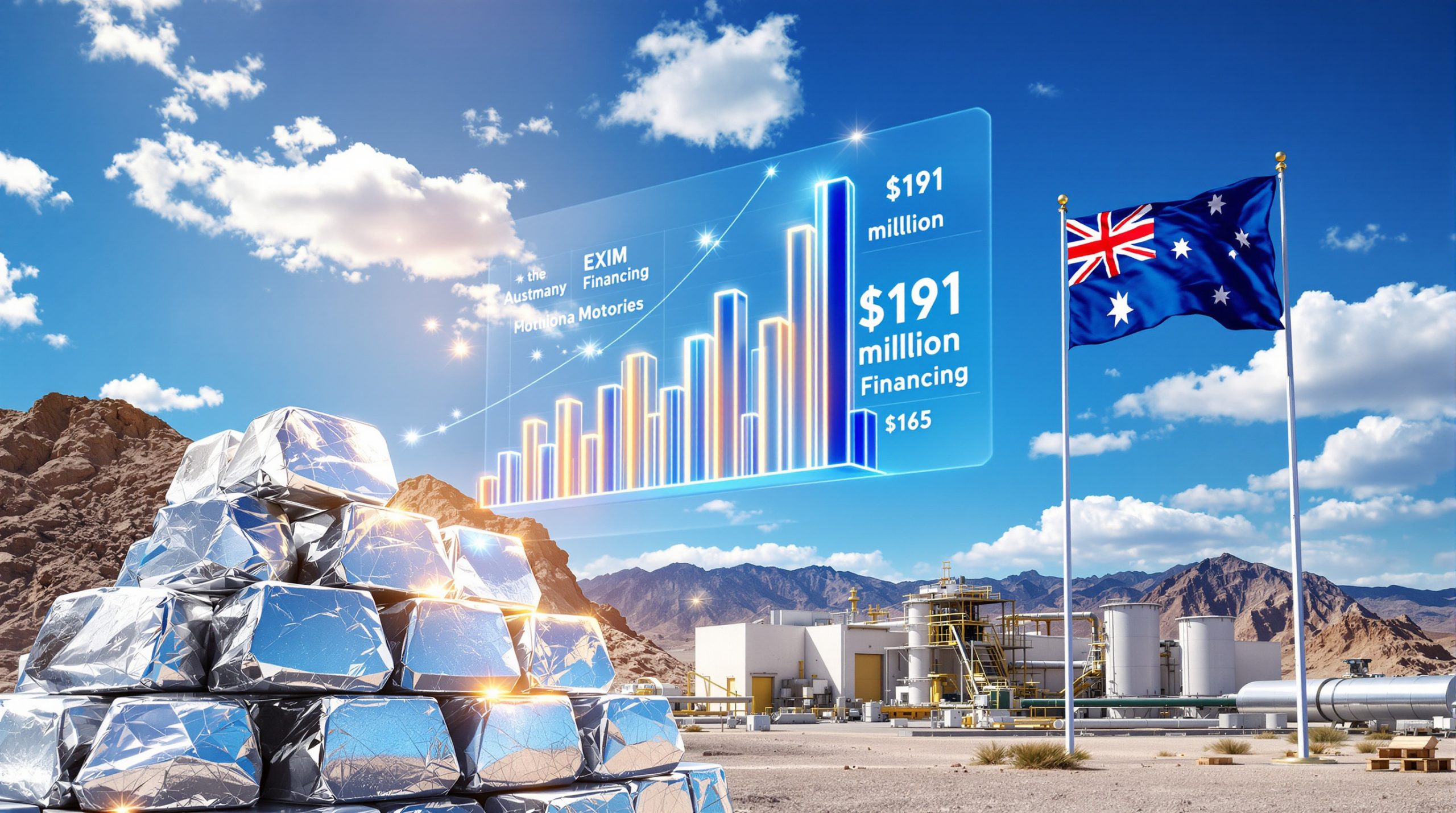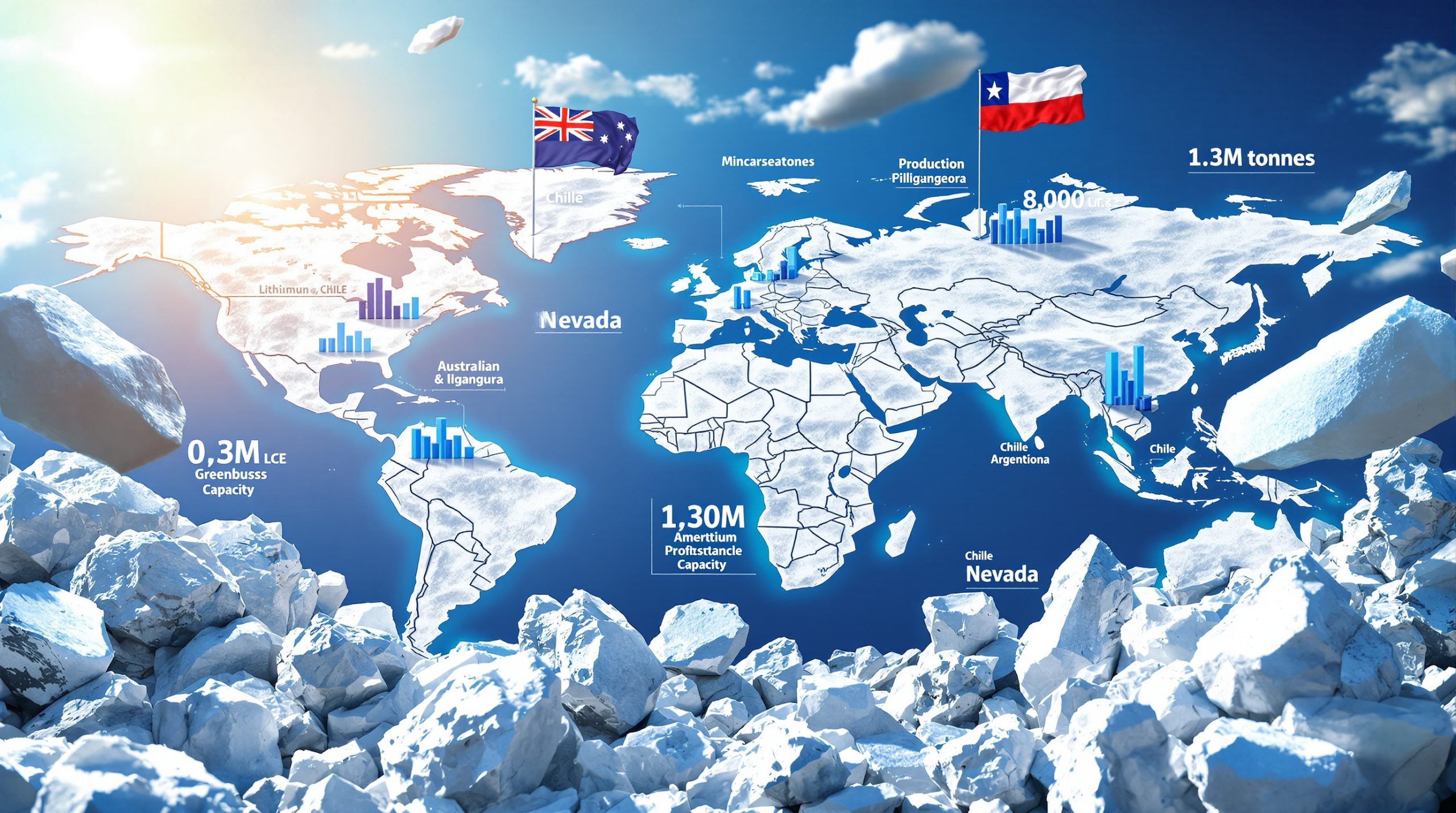Iron Ore Miners Navigate Tariff Turmoil: Challenges and Outlook
The global iron ore industry faces unprecedented challenges in 2025, marked by operational disruptions from extreme weather, escalating U.S.-China trade tensions, and shifting demand dynamics in China. Major producers like BHP Group, Rio Tinto, and Vale SA reported significant quarterly shipment declines, with Rio Tinto's exports dropping to a six-year low due to cyclones in Australia's Pilbara region and heavy rainfall in Brazil. Concurrently, punitive tariffs imposed by the U.S. and retaliatory measures from China have destabilized markets, driving iron ore price volatility below $95 per ton and forcing producers to recalibrate production and demand strategies. As Beijing pivots toward domestic consumption-led growth, the industry's recovery hinges on China's policy stimulus decisions and miners' ability to adapt to fragmented trade flows and geopolitical uncertainties.
What Challenges Are Iron Ore Miners Facing in 2025?
Weather Disruptions Impact Major Producers
The first quarter of 2025 saw severe weather disruptions across key iron ore production hubs. In Australia's Pilbara region, cyclones disrupted mining and logistics operations, leading Rio Tinto to report a 9% year-on-year decline in exports, the lowest in six years. Similarly, Vale SA faced production bottlenecks in northern Brazil due to heavy rainfall, exacerbating supply chain delays. BHP Group, while less affected than Rio Tinto, still recorded reduced shipments compared to 2024.
These setbacks compel companies to accelerate production in subsequent quarters to meet annual targets, though operational flexibility remains constrained by ongoing climatic volatility in traditionally stable mining regions. Industry analysts note that the frequency of extreme weather events affecting iron ore production has increased by nearly 40% over the past decade.
US-China Trade War Escalation
The Trump administration's recent tariffs targeting Chinese goods, coupled with Beijing's retaliatory levies, have introduced new uncertainties into the iron ore market. The direct impact was evident in April 2025, when iron ore prices plummeted below $95 per ton, erasing the relative stability of Q1 ($103 per ton average).
BHP CEO Mike Henry highlighted the "significant impact" of slower global growth and fragmented trade, emphasizing that China's shift toward consumption-led growth and adaptive trade flows will dictate the sector's trajectory. Further complicating matters, the U.S. launched an investigation into potential tariffs on critical minerals, threatening to destabilize supply chains for steel and manufacturing sectors reliant on imported materials.
"The geopolitical landscape is reshaping mineral markets in ways we haven't seen since the Cold War," noted industry consultant Margaret Chen. "Iron ore miners are caught between resource nationalism and geopolitical market shift."
How Are Market Conditions Affecting Iron Ore Prices?
Recent Price Movements and Market Dynamics
Iron ore prices exhibited resilience in early 2025, averaging $103 per ton in Q1, but collapsed to $95 in April amid escalating trade tensions. This decline reflects a confluence of factors: a supply surge from major producers, weakening Chinese demand as its economy matures, and speculative market reactions to geopolitical risks.
The simultaneous oversupply and demand contraction has created a precarious balance, with price volatility likely to persist through 2025 as trade policies evolve. Technical analysis indicates that the $90-95 range represents a critical support level that, if breached, could trigger further selling pressure from institutional investors.
Mineralogical factors are also influencing pricing dynamics, as higher-grade ores (62%+ Fe content) command premium prices due to environmental policies in China that favor cleaner production methods. The spread between high and medium-grade ores has widened to nearly $18 per ton, the highest differential in three years.
China's Economic Response and Implications
Beijing's emphasis on domestic consumption to offset export losses presents both challenges and opportunities for iron ore demand. Historical precedents suggest increased infrastructure spending could revive steel-intensive sectors, boosting short-term demand. However, China's property sector slowdown and environmental reforms temper optimistic projections.
Wood Mackenzie's David Cachot noted that market participants are closely monitoring stimulus measures, which could either mitigate or exacerbate the current downturn. "China's policy response represents one of the most significant variables in the industry outlook," Cachot emphasized.
Mike Henry underscored the critical role of China's economic adaptability, stating, "Trade flows must align with the new global environment to sustain growth." Analysts suggest that China's investments in high-speed rail and renewable energy infrastructure could partially offset declining demand from the property sector, though the net effect remains uncertain.
What's the Outlook for Major Iron Ore Producers?
Recovery Strategies for Production Shortfalls
Major miners are prioritizing production ramp-ups to offset Q1 deficits, leveraging existing capacity to meet revised annual targets. However, weather-related disruptions in Australia and Brazil, coupled with labor shortages and equipment lead times, complicate recovery efforts.
Operational flexibility—such as dynamic logistics planning and diversified supply chains—will be essential to navigate ongoing climatic and geopolitical risks. Some producers are implementing advanced AI-driven weather prediction systems that have shown 35% improved accuracy in forecasting disruptions up to two weeks in advance.
Industry insiders reveal that major miners are quietly exploring enhanced ore beneficiation processes that can upgrade lower-grade deposits to marketable products, potentially unlocking previously uneconomic resources. These technological innovations could significantly influence supply dynamics by 2026.
Market Participants Await Chinese Policy Decisions
The industry's medium-term outlook hinges on China's policy response to trade and economic headwinds. Stimulus measures targeting infrastructure or manufacturing could stabilize steel demand, while inaction may prolong price suppression.
Cachot identified Beijing's decisions as an "additional source of concern," highlighting the delicate balance between economic stabilization and long-term structural reforms. Investment strategists suggest that China may deploy targeted stimulus of approximately 5-7 trillion yuan ($700-980 billion) in infrastructure spending, though this remains significantly below 2020-2021 levels.
The evolution of China's dual circulation policy—emphasizing both domestic consumption and export markets—will shape iron ore demand patterns for years to come. As one mining executive confided on condition of anonymity, "Everyone's contingency plans have contingency plans right now."
FAQ: Iron Ore Market and Trade Tensions
How Are Trade Tensions Affecting the Broader Mining Sector?
The iron ore miners and tariff turmoil has ripple effects beyond iron ore miners. Alcoa reported a $20 million financial hit from U.S. tariffs on Canadian metal imports, while gold prices surged to record highs ($3,300 per ounce) as investors sought safe-haven assets.
Critical minerals like rare earth metals have become geopolitical tools, with China restricting exports to pressure trading partners. The weaponization of mineral supply chains has accelerated investments in recycling technologies and substitution research, with venture capital funding in this space increasing 78% year-over-year.
Mining boardrooms face governance challenges amid market uncertainty, with shareholder activism rising 45% compared to 2024. Resource-rich nations from Indonesia to Chile are implementing export restrictions and higher royalty structures to capture more value from their mineral endowments.
What Are the Key Indicators to Watch in the Iron Ore Market?
Industry experts recommend monitoring these critical indicators:
- Chinese steel production rates and capacity utilization
- Infrastructure spending announcements from Beijing
- Property sector performance in China
- Trade flow adjustments between major economies
- Weather patterns in key production regions
- Production recovery rates from major miners
Geological factors are increasingly relevant, particularly the quality differential between Australian and Brazilian ores. Brazilian ores typically contain higher iron content (65-67% Fe) but face longer shipping routes to Asian markets, creating arbitrage opportunities during supply disruptions.
How Might Iron Ore Trade Patterns Shift Under Continued Tensions?
Trade pattern adjustments are already underway, with potential redirection of flows to avoid tariff impacts. Regional supply chains are gaining importance, evidenced by increased Japanese and Korean investment in Australian mining operations.
Growing markets in India and Southeast Asia provide diversification opportunities for iron ore miners feeling the pinch from Chinese slowdown. Some producers are negotiating longer-term contracts with fixed-price components to hedge against volatility.
Strategic stockpiling by manufacturers anticipating further disruptions has increased inventory levels at major ports by 18% year-over-year. Meanwhile, consuming nations are accelerating domestic resource development, with India's National Mineral Development Corporation expanding capacity by 25% over three years.
Adapting to the New Normal: Innovation in Uncertain Times
The iron ore industry faces a paradigm shift as tariff turmoil reshapes global trade. Major miners are investing in automation and digitalization to improve operational resilience, with Rio Tinto deploying autonomous haulage systems across 86% of its Pilbara fleet.
Environmental considerations add another layer of complexity, as steel decarbonization efforts gain momentum in Europe and Japan. Direct reduction iron (DRI) technologies using hydrogen instead of coal could fundamentally alter iron ore quality requirements, favoring higher-grade producers.
The financing landscape is evolving alongside market uncertainties, with project capital increasingly tied to ESG performance metrics. Iron ore miners with strong sustainability credentials can access funding at rates 30-40 basis points below industry averages.
"This isn't just a cyclical downturn—it's a structural transformation," observed mining economist Dr. Helen Zhao. "The companies that will thrive are those that see beyond the tariff turmoil to the fundamental shifts in how the world produces and consumes steel."
The recent iron ore price surge earlier in the year now seems a distant memory as market participants grapple with these new realities. Investors seeking to navigate this complex landscape should prioritize producers with diversified portfolios and strong global commodities insights to weather continuing uncertainty.
Disclaimer
This analysis contains forward-looking statements about iron ore markets, trade policies, and corporate strategies. Actual outcomes may differ materially from projections due to unpredictable policy decisions, weather events, and macroeconomic shifts. Readers should consider multiple scenarios when making investment or business decisions related to the iron ore sector.
Want to Catch the Next Big ASX Mining Discovery?
Discover how investors have achieved substantial returns from major mineral discoveries like De Grey Mining (DEG) and WA1 Resources (WA1) by exploring Discovery Alert's dedicated discoveries page, where real-time alerts powered by the proprietary Discovery IQ model transform complex mineral data into actionable investment opportunities.




